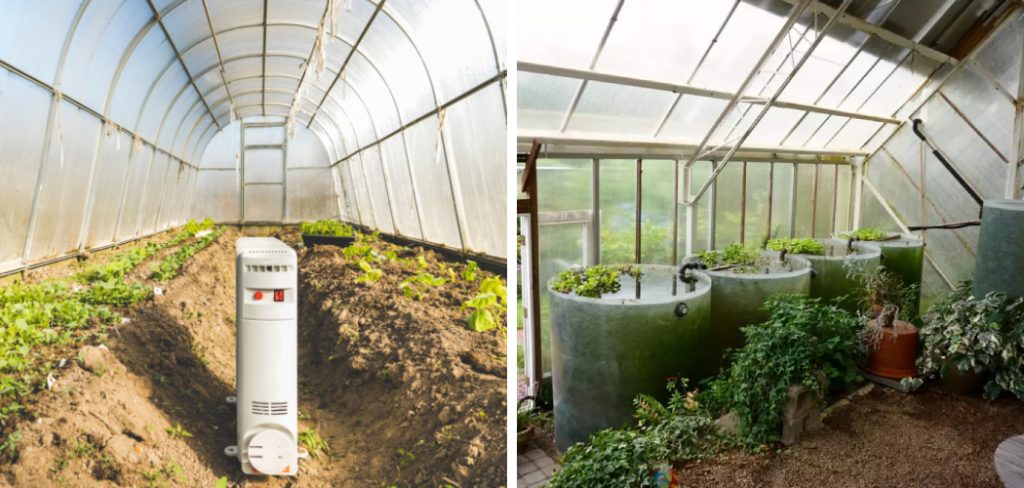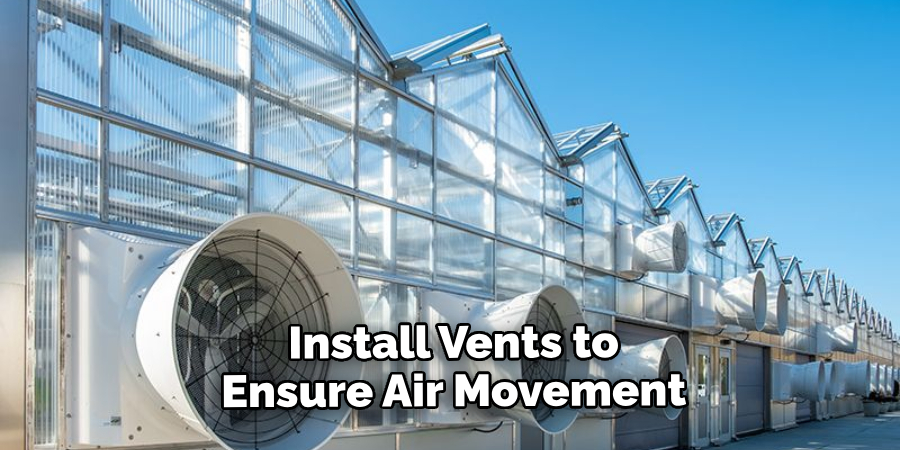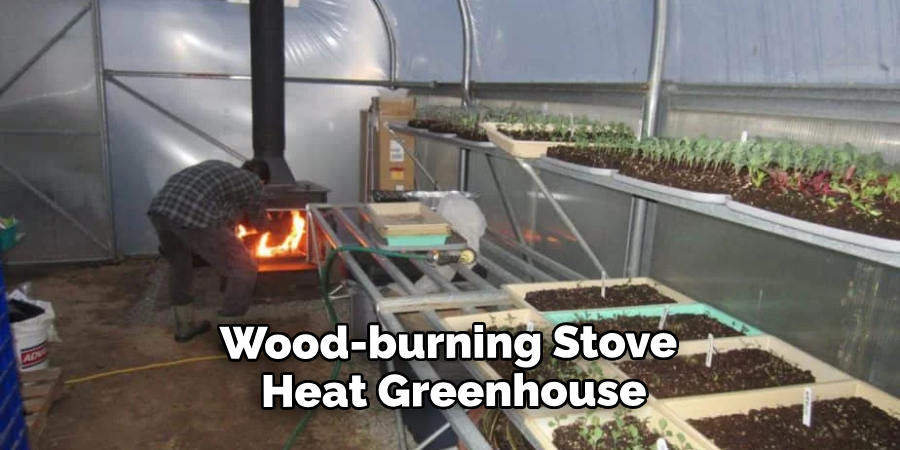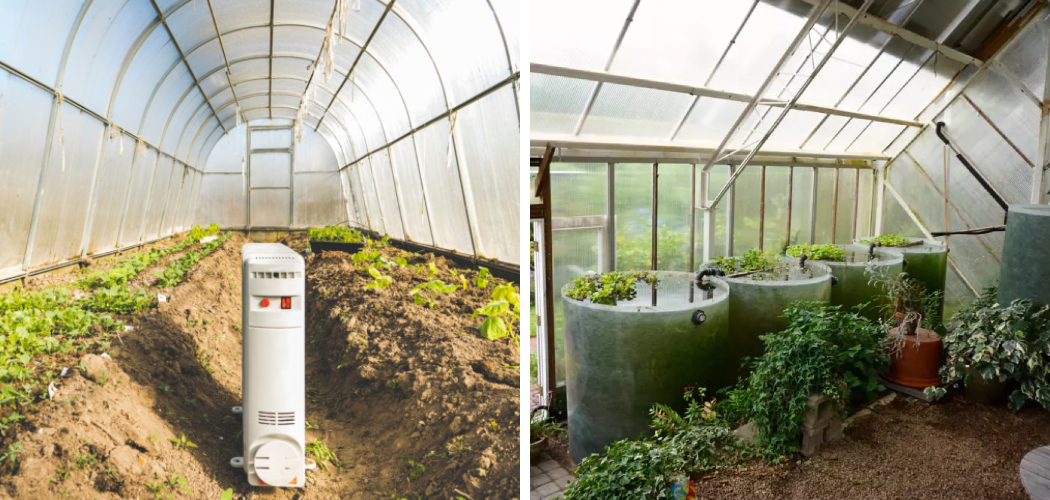To heat a greenhouse without electricity, consider using alternative methods such as solar power, biomass, or geothermal heating. Greenhouses provide an ideal environment for plants to thrive in, but maintaining a consistent temperature inside can be challenging, especially without access to electricity.
However, there are alternative methods available that can help heat a greenhouse effectively. In this article, we will explore a few methods that can provide heat without relying on electricity. By utilizing alternative energy sources such as solar power, biomass, or geothermal heating, greenhouse owners can create a sustainable and eco-friendly solution to keep their plants warm and healthy.
These methods can be both economical and efficient, ensuring optimal growing conditions throughout the year. Let’s delve into these methods and discover how to heat a greenhouse without electricity.

The Benefits Of Heating A Greenhouse Without Electricity
Heating a greenhouse without electricity offers numerous benefits. Firstly, it leads to reduced energy costs, allowing gardeners to save money in the long run. Additionally, this method is environmentally friendly as it minimizes reliance on fossil fuels. By using alternative heating methods, such as solar power or biomass, greenhouse owners can effectively reduce their carbon footprint.
Moreover, heating a greenhouse without electricity provides increased control over temperature regulation. This is particularly advantageous for delicate plants that require specific conditions to thrive. Gardeners have the flexibility to adjust heating systems to meet the unique needs of their plants, ensuring optimal growth and productivity.
Choosing alternative heating methods for greenhouses not only offers cost and environmental benefits but also allows for greater control over the growing environment, leading to healthier and more prosperous plants.
How to Heat a Greenhouse Without Electricity: Step by Step Guide
Passive Heating Methods For Greenhouses
To heat a greenhouse without electricity, passive heating methods are a sustainable and cost-effective solution. Orienting the greenhouse towards the sun maximizes sunlight exposure, providing natural heat. Installing solar panels can generate heat by harnessing solar energy. Insulating the greenhouse aids in trapping warmth and reducing heat loss.
Double-layered glazing creates an additional layer of insulation. Adding insulation to the walls and roof further enhances heat retention. These methods not only reduce electricity consumption but also promote an eco-friendly approach to greenhouse heating. By utilizing sunlight effectively and implementing insulation measures, greenhouse owners can maintain optimal temperatures for plant growth without relying on electricity.
Non-Electric Heating Systems For Greenhouses
Non-electric heating systems for greenhouses provide alternative ways to heat your greenhouse without relying on electricity. One option is biomass heating, which involves using wood chips or pellets as a heat source. Another option is to install a wood-burning stove or furnace, which can be an efficient and cost-effective choice.
Propane heaters are also commonly used in greenhouses for their convenience and effectiveness. However, it is important to choose the right size and type of heater that suits your greenhouse size and heating needs. Additionally, proper ventilation and safety precautions must be taken to ensure a safe and efficient heating system for your greenhouse.
By exploring these non-electric heating systems and implementing the necessary precautions, you can effectively heat your greenhouse without electricity.
Heat Retention Techniques For Greenhouses
Thermal mass plays an essential role in effectively heating a greenhouse without electricity. One technique is to install thermal storage materials, which can absorb heat during the day and release it at night. Another method is using water containers or concrete flooring that can retain heat and provide a steady temperature.
Thermal curtains are also effective in trapping heat, especially during colder months. Adding insulated curtains can further enhance heat retention. Lastly, creating separate zones for different crops allows for better temperature control and ensures each plant receives the ideal environment.
By implementing these heat retention techniques, greenhouse owners can cultivate plants even without electricity, ensuring optimal growth and productivity.
Other Tips For Efficiently Heating A Greenhouse
Proper air circulation is key to efficiently heating a greenhouse. Install fans or vents to ensure air movement. Consider using heat transfer tubes to distribute warmth evenly. Microclimate management is crucial; monitor temperature and humidity levels regularly. Adjust ventilation accordingly to maintain optimal conditions.

Companion planting can also help, as certain plants generate natural warmth. Carefully select plants that contribute to the greenhouse’s microclimate. By following these tips, you can create a cozy and energy-efficient environment for your greenhouse without relying on electricity.
Frequently Asked Questions For How To Heat A Greenhouse Without Electricity
How Can You Heat A Greenhouse Without Electricity?
You can heat a greenhouse without electricity by using alternative methods such as solar power, geothermal heating, composting, or using a wood-burning stove. These methods provide heat while minimizing energy consumption and reducing your carbon footprint.
Can I Use Solar Power To Heat My Greenhouse?
Yes, solar power is an excellent option for heating a greenhouse. You can install solar panels to generate electricity for heating purposes or use passive solar techniques such as installing thermal mass materials to absorb and release heat during the day and night.
What Is Geothermal Heating For Greenhouses?
Geothermal heating utilizes the stable temperature of the earth to regulate the greenhouse’s temperature. This method involves installing pipes underground to circulate water or air, which absorbs or releases heat depending on the greenhouse’s needs.
Is Composting Effective For Greenhouse Heating?
Composting can be a cost-effective and eco-friendly way to heat a greenhouse. The decomposition process generates heat, and by placing compost bins strategically around the greenhouse, you can distribute the warmth, providing a natural heating method.
Can A Wood-Burning Stove Heat A Greenhouse?
Yes, a wood-burning stove can effectively heat a greenhouse. By burning wood, you generate heat that can be distributed through a pipe or flue system, providing warmth for your plants. However, it’s important to ensure proper ventilation and avoid excessive smoke or carbon monoxide buildup.

Conclusion
Heating a greenhouse without electricity is entirely possible by utilizing alternative methods such as passive solar heating, insulation, and utilizing natural heat sources. By strategically placing your greenhouse in a sunny location and using materials like double-glazed panels, you can trap and harness the sun’s warmth effectively.
Additionally, insulating your greenhouse and using thermal mass materials, you can retain heat overnight. Making use of natural heat sources such as compost, geothermal energy, or even water barrels can significantly contribute to maintaining a suitable temperature inside the greenhouse.
It is crucial to regularly monitor the temperature and make adjustments as necessary to ensure the optimal growth of your plants. By implementing these strategies, you can create a sustainable and energy-efficient solution for heating your greenhouse without relying on electricity.
Happy growing!

